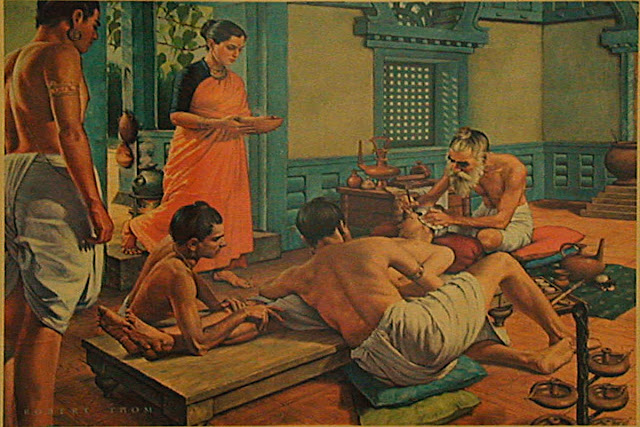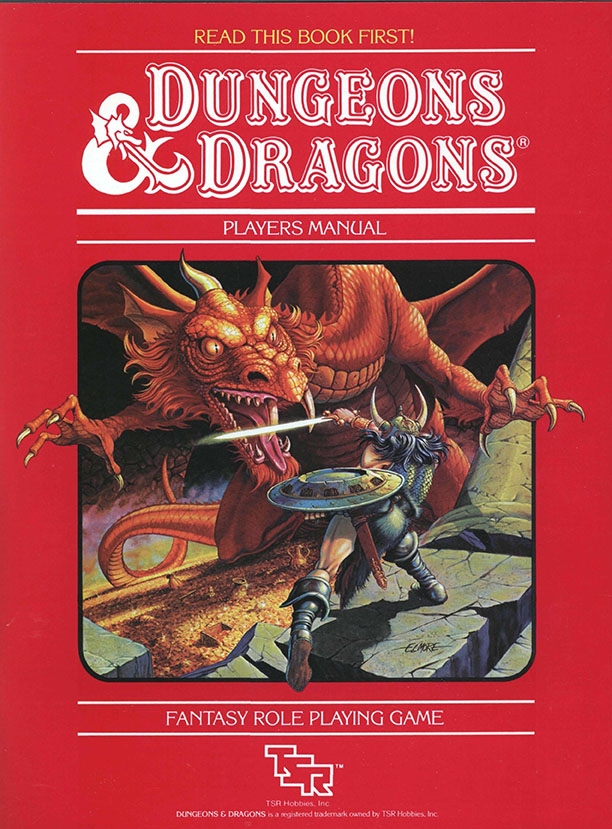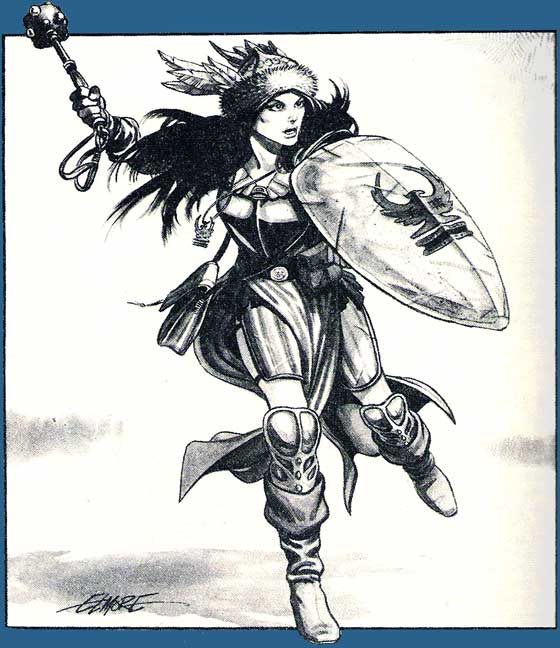 La Marca dell'Estè un retro-clone (ovvero un regolamento per giochi di ruolo molto simile al famoso Dungeons & Dragons pubblicato anche in Italia negli anni 80 dall'Editrice Giochi) spagnolo tradotto in italiano dai tipi della redglove (qui lasezione del loro sito dedicato a questo gioco), il regolamento è basato su quello di Labyrint Lord (il link vi porta alla versione italiana scaricabile gratuitamente su DriveThruRPG) con una serie di modifiche e particolarità.
La Marca dell'Estè un retro-clone (ovvero un regolamento per giochi di ruolo molto simile al famoso Dungeons & Dragons pubblicato anche in Italia negli anni 80 dall'Editrice Giochi) spagnolo tradotto in italiano dai tipi della redglove (qui lasezione del loro sito dedicato a questo gioco), il regolamento è basato su quello di Labyrint Lord (il link vi porta alla versione italiana scaricabile gratuitamente su DriveThruRPG) con una serie di modifiche e particolarità. Ci sembra doveroso segnalare il blog degli autori del gioco (in spagnolo) Adventuras en La Marca Del Este, il profilo facebook dedicata al gioco "La Marca Del Este" ed anche il profilo G+ con lo stesso nome "La Marca Del Este".
Il gioco richiama fin dai colori e dalla scelta di presentarsi in scatola la famosa “scatola rossa” (proprio quella pubblicata anche in Italia) richiamo che diventa esplicito nell'introduzione fatta dagli autori.
 |
| La scatola ed i suoi contenuti |
All'interno della scatola italiana troviamo un set di dadi (1xd4, 1xd6, 1xd8, 1xd10, 1xd10% – un d10 numerato 00, 10, 20 ecc, 1xd12 ed 1xd20) – confessiamo che avremmo preferito 3xd6 al posto del d10 con le decine – uno schermo del narratore di grande utilità con tabelle e dati utili durante il gioco, 50 schede del personaggio e il pezzo forte ovvero il manuale d'avventura contenente tutte le regole pieno d'illustrazioni di buona qualità, le uniche a colori sono quelle della copertina, della scatola e dello schermo del Narratore mentre l'interno è tutto in b/n; nell'edizione spagnola era presente anche una matita personalizzata con il logo del gioco qui assente ma a parte il piacere di un gadget aggiuntivo l'assenza della matita nulla toglie alla ricchezza della scatola.
Il manuale d'Avventura
Il regolamento di Labyrinth Lord è noto e gratuitamente disponibile in rete anche in italiano e quindi mi concentrerò sulle differenze tra i due regolamenti.
Rispetto ad alcuni regolamenti moderni segnaliamo che le caratteristiche sono le solite 6 (Forza, Destrezza, Costituzione, Intelligenza, Saggezza e Carisma) con i bonus vanno da -3 a +3 (per una caratteristica di 18 o 19 – qui una nota in ogni tabella c'informa che il bonus aumenta di +1 per ogni 2 punti di caratteristica), che la generazione del personaggio consigliata è tira 3d6 in ordine o 4d6 (scarta il più basso in ordine) ma che si ritirano tutti i punteggi inferiori a 6, non c'è differenza tra classe e razza (ovvero l'elfo è un mago-guerriero e basta), la Classe d'Armatura è discendente (9 è la peggiore -1 è molto difficile da colpire), che i tiri salvezza sono i classici 5 (Veleni, Bacchette Magiche, Pietrificazione o Paralisi, Attacchi con Soffi, Incantesimi e Armi Magiche) dipendenti da classe e livello, gli allineamenti sono solo 3 (Legale, Neutrale e Caotico) senza reinterpretazioni significative (il Legale è buono, eroico ed altruista; il Neutrale pensa che il fine giustifichi i mezzi; il Caotico è un pazzo psicotico). I pesi e le misure sono espressi nel sistema metrico internazionale ed i punti esperienza si guadagnano uccidendo mostri o recuperando tesori.
Vediamo ora alcuni dettagli cercando di soffermarci sulle differenze dal regolamento base o da Labyrinth Lord.
CLASSI (tra parentesi i requisiti minimi per accedere alla classe, ove non specificato la classe non ha limiti di livello e nel manuale le tabelle arrivano fino al 20' livello), elencate secondo l'ordine del manuale (probabilmente si è mantenuto l'ordine dei nomi spagnoli):
- Chierico (SAG 10): d6 come dado vita, incantesimi fin dal 1' livello, opzionalmente nessun limite sulle armi; Scacciare non morti: tiro 2d6;
- Elfo (INT 12, DES 13): d6 come dado vita, il classico mago-guerriero con limite massimo di livello pari a 10, capacità di vedere al buio e di notare con più facilità porte segrete e nascoste e immunità alla paralisi;
- Nano (CON 9): d8 come dado vita, guerriero con maggior resistenza (tiri salvezza migliori) e competenza nelle costruzioni e trappole; livello massimo 12
- Esploratore (FOR 12, DES 9, SAG 12): d8 come dado vita, un guerriero difficile da sorprendere e capace di seguire i suoi nemici, particolarmente letale contro gli umanoidi malvagi (orchetti, goblin, giganti ecc) contro cui riceve un bonus di +1 per livello (non è chiaro se il bonus è ai danni o alla possibilità di colpire; nell'AD&D era un bonus ai danni per quest'abilità del Ranger), e un compagno animale all'ottavo livello; non possono usare lo scudo;
- Guerriero (FOR 10): d8 come dado vita, di diverso dal solito acquista un attacco aggiuntivo al 15' livello ed un altro ogni 5 livelli, fino a 4 attacchi al 25' livello;
- Halfling (DES 9, COS 9): d6 come dado vita, limitati all'uso di armi a una mano, possono usare qualsiasi armatura e sono abilissimi a nascondersi; livello massimo 8
- Ladro (DES 10): d4 come dado vita,
- Mago (INT 10): d4 come dado vita,
- Paladino (FOR 12, SAG 12, CAR 12): d8 come dado vita, un guerriero con immunità alle malattie, innata protezione dal male e capacità di percepire il male a volontà; dal 9' livello lancia incantesimi di chierico, scaccia i non morti come un chierico di 2 livelli in meno, bonus ai tiri salvezza e obbligo di donare il 20% dei tesori conquistati.
Combattimento:
- Tiri critici e catastrofici: 20 dà il doppio dei danni, 1 un problema improvvisato dal Narratore
- un'inspiegabile modifica a 3 metri (invece di 1,5 m) della distanza minima per utilizzare le armi a distanza (forse un errore?) che priva di senso la distanza minima di alcune armi (non esiste cioè una distanza dove applicare il bonus per la distanza minima);
- un bonus di ben +4 per chi prende la mira per un round (rinunciando così ad attaccare o a qualsiasi altra azione) che diventa di +8 per chi usa le balestre (modifica interessante).
Tiro caratteristica:
- Per tutte quelle prove (nuotare, correre su un pendio scivoloso ecc) non previste dalle regole si tira 1d20 cercando di fare meno della caratteristica più appropriata (scelta dal Narratore in base alla situazione) con la particolarità di utilizzare il bonus di caratteristica (cambiato di segno) come modificatore al tiro (un bonus quindi per punteggi alti) e con un modificatore per la difficoltà assegnato dal Narratore che va da -5 (compito facile) a +5 (compito difficile).
Incantesimi:
- Il sistema magico è quello classico di D&D, ovvero lancia e dimentica;
- Assenza di tabelle riepilogative degli incantesimi presenti nel manuale, sono gli stessi di Labyrinth Lord ordinati in modo non alfabetico (la sensazione come per le classi è che si sia lasciato l'ordine dei nomi spagnoli senza riordinarli); per gli incantesimi classici “nominali” Tenser, Nystul, Otto, Bigby ecc si sono aggiunti nuovi nomi (e.g. Il Disco Fluttuante di LL che in AD&D era Disco Fluttuante di Tenser qui diventa Disco Fluttuante di Nebulosa); particolarmente divertente la sbavatura sull'incantesimo di 9' livello “Stasi Temporale” che diventa “Estasi Temporale”....
- Descrizioni semplici ed efficaci salvo per pochi incantesimi (Metamorfosi ad esempio)
Oggetti, Oggetti Magici e Tesori:
- Ci sono due capitoli ragionevolmente completi uno sull'attrezzatura normale ed uno con oggetti magici e le regole per generare i tesori dei mostri.
- Un ricco bestiario arricchito da un gran numero di pregiate illustrazioni in bianco e nero
Il manuale è completato da una mappa di 2 pagine (stampata nel manuale non estraibile) della Marca dell'Est, una breve descrizione della stessa di ca. 4 pagine e due avventure introduttive che occupano ben 14 pagine.
Conclusioni: il gioco è interessante e pronto all'uso, manca forse qualche consiglio su come preparare un'avventura ed altri consigli per il neofita completo, nonostante questo è un acquisto consigliato per riscoprire il gioco classico con una veste grafica rinnovata e moderna.













































































